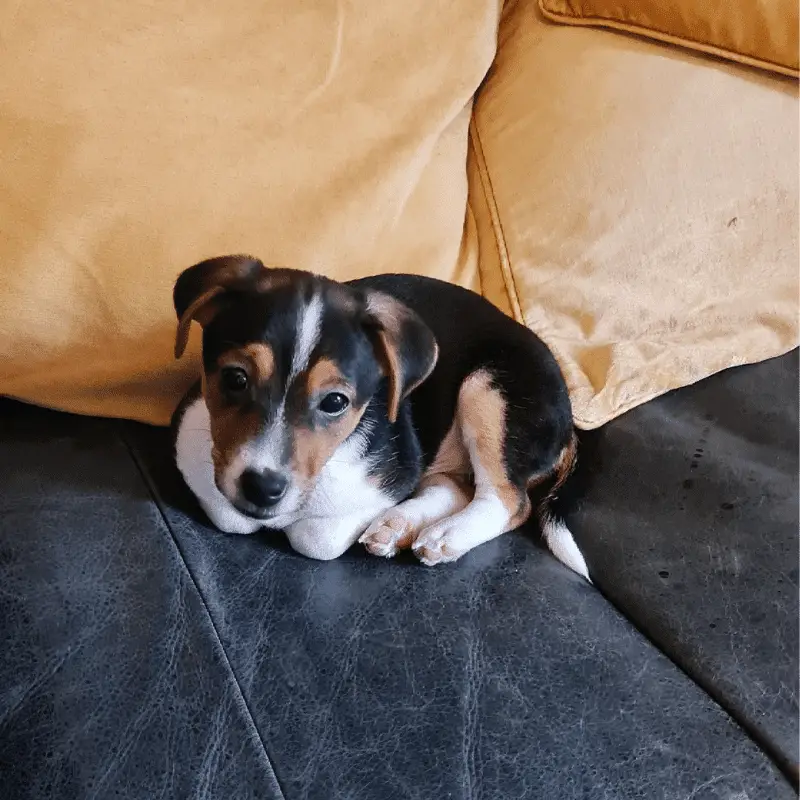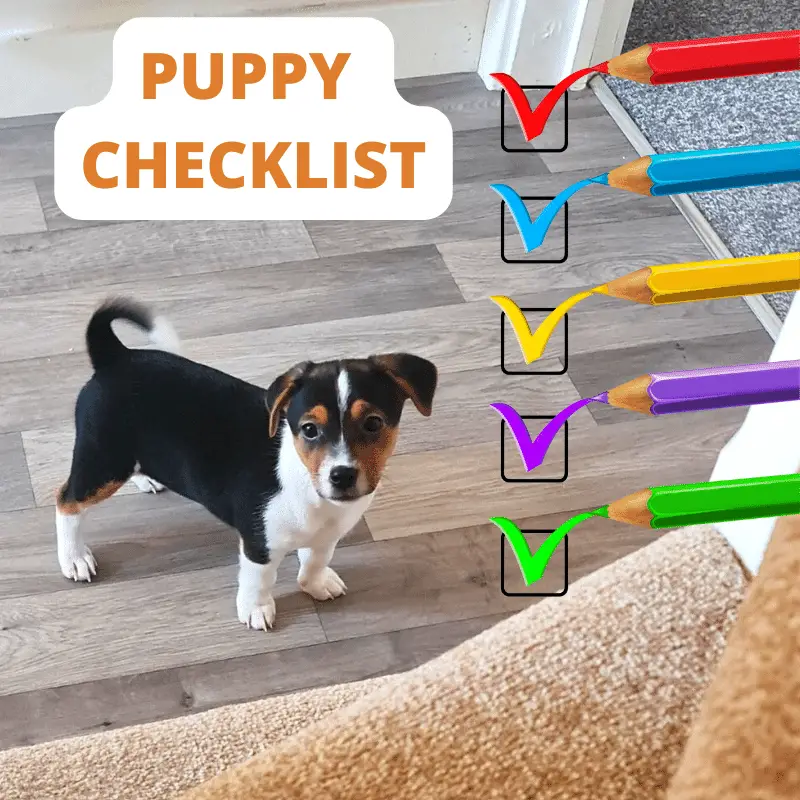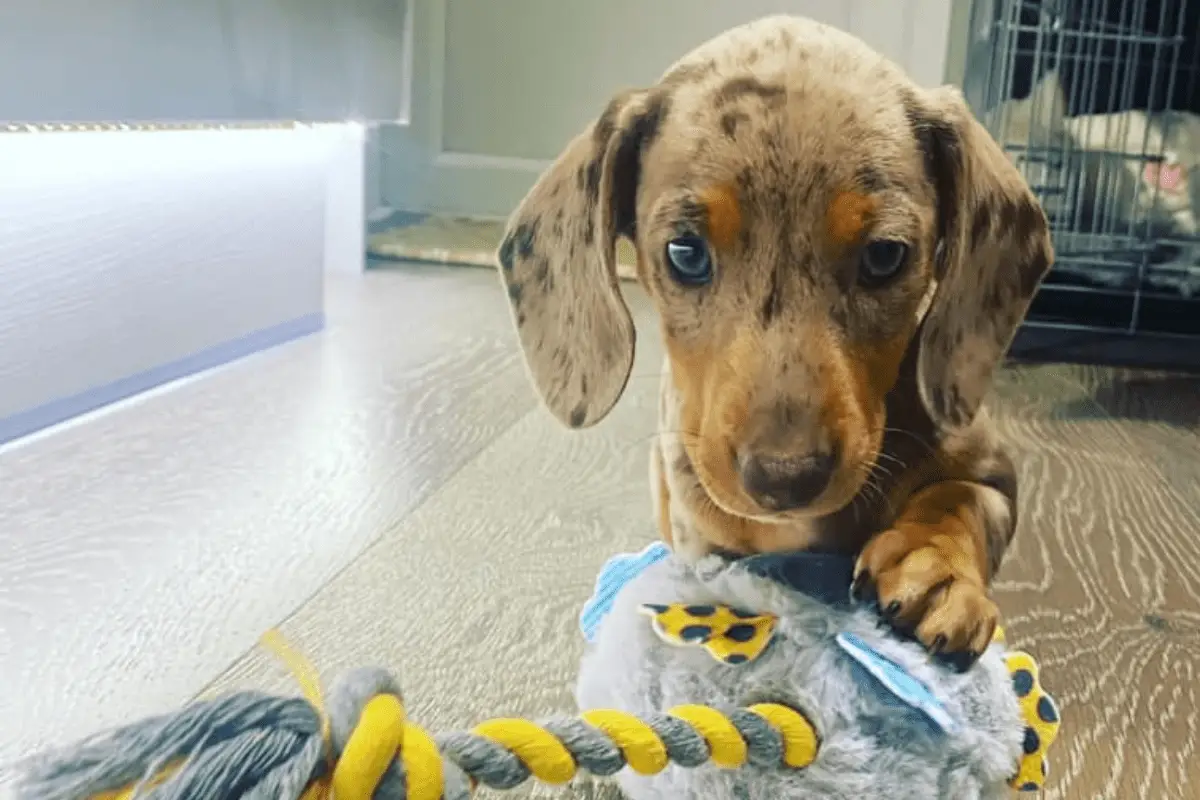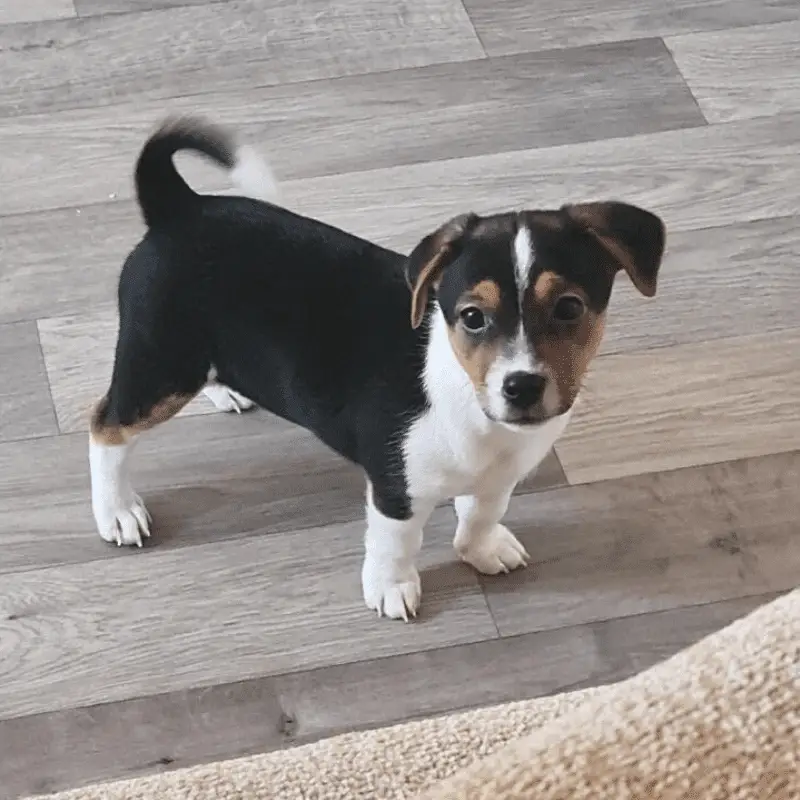Congratulations on the new addition to your family! Bringing a new puppy into your life is an exciting and fulfilling experience, but it also requires a lot of responsibility and preparation. From providing the necessary supplies and creating a safe environment to socialising your puppy and training them, there are many aspects to consider when getting ready for a new furry friend. In this comprehensive guide, I will cover everything you need to know to prepare for the arrival of a new puppy.
From my own experiences, I will discuss the necessary supplies, ways to make your home safe, how to prevent common health problems, effective strategies for socialisation and building a strong bond, and how to address common puppy behaviour problems like chewing, biting, and house-training. With this guide, you’ll be well-equipped to give your new puppy the best possible start and create a long-lasting and rewarding relationship with your furry companion.
Within the guide, you will find linked content to my other vital information that I feel is necessary for any new puppy owner.
1. Necessary Supplies for a New Puppy
You must have all the necessary supplies to help your furry friend adjust to their new environment. From food and water bowls to grooming supplies, there are several items that you will need to purchase for your new puppy. In this first section, I have listed all the essential supplies every new puppy owner should have before its arrival.
Here are ten essential items that a new puppy may need:
- Food and water bowls
- High-quality puppy food
- Collar and leash
- ID tag with the puppy’s name and owner’s contact information
- Crate or carrier for transportation and training
- Bed or blanket for sleeping
- Toys for play and mental stimulation
- Puppy pads or litter box for potty training
- Grooming supplies, such as a brush, shampoo, and nail clippers
- Treats for training and positive reinforcement.
2. How to Make Your Home Safe for Your Puppy
Embarking on the journey of bringing a new puppy into your life is an exhilarating and fulfilling experience. However, with great joy comes great responsibility, and it is crucial to understand the importance of creating a safe haven for your furry companion within the confines of your home. As a new puppy owner, you must provide a secure environment for your precious pooch, ensuring they can explore, play and thrive in a space tailored to their needs.
Puppies are curious and love to explore, sometimes leading to dangerous situations. This second section will discuss some tips for making your home safe for your puppy, including securing loose wires and cords, keeping toxic substances out of reach, and providing safe toys for your puppy to play with. These tips can help your puppy stay safe and healthy in their new home.
- Secure loose wires and cords: Puppies love to chew on things, and electrical cords can be dangerous. Use cord covers or hide cords behind furniture to keep them out of reach.
- Keep toxic substances out of reach: Puppies are curious and may try to eat anything they find. Keep cleaning supplies, medications, and other toxic substances out of reach.
- Store food properly: Keep food in sealed containers or cabinets that puppies can’t reach. Don’t leave food out on counters or tables.
- Block off dangerous areas: Use baby gates or other barriers to block off areas dangerous for puppies, such as stairs or rooms with fragile items.
- Remove small objects: Puppies can choke on small objects, so remove anything that could be a hazard, such as small toys, batteries or coins.
- Keep plants out of reach: Some plants can be toxic to puppies, so keep them out of reach or choose non-toxic plants.
- Secure rubbish bins: Puppies love to dig through trash, so use a secure trash can or keep it out of reach.
- Provide safe toys: Puppies need to chew, so provide safe toys for them to play with. Avoid toys with small parts that could be swallowed.
3. Preventing Common Health Problems in Puppies

As a puppy owner, it’s essential to be proactive in preventing common health problems affecting your furry friend. This section will cover some of the most common health issues that puppies can face and provide tips and advice on preventing them. From parasites and vaccinations to dental problems and obesity, we’ll explore the six steps you can take to keep your puppy happy and healthy for years to come. By following the advice in this section, you can ensure that your puppy gets the best possible start and enjoys a long and healthy life with you.
- Parasites: Puppies are susceptible to fleas, ticks, and worms. Regular deworming and flea/tick prevention are essential to keep your puppy healthy.
- Vaccinations: Puppies need vaccinations to protect them from diseases such as distemper, parvovirus, and rabies. Make sure to follow your veterinarian’s recommended vaccination schedule.
- Dental problems: Puppies can develop dental problems such as gum disease and tooth decay. Regular teeth brushing and dental check-ups can help prevent these issues.
- Obesity: Overfeeding and lack of exercise can lead to obesity in puppies. Make sure to feed your puppy a balanced diet and provide plenty of opportunities for exercise.
- Hip dysplasia: Some breeds are prone to hip dysplasia, it is a condition where the hip joint doesn’t develop properly. Choosing a reputable breeder and providing proper nutrition and exercise can help prevent this condition.
- Eye problems: Puppies can develop eye problems such as cataracts and cherry eyes. Regular eye exams and prompt treatment of any issues can help prevent long-term damage.
Regular veterinary check-ups, proper nutrition, exercise, and preventative care can help keep your puppy healthy and prevent many common health issues.
4. Effective Ways to Socialise Your Puppy with Dogs and People
Socialising your puppy is crucial for its development and well-being. It helps them learn how to interact with other dogs and people, reduces the risk of fear and aggression, and improves their overall behaviour. This section will discuss some effective points to help socialise your puppy with dogs and people. From introducing your puppy to new environments and people to enrolling them in puppy socialisation classes, we will provide practical tips and techniques to ensure your puppy becomes a well-adjusted and socialised companion.
- Start early: The earlier you start socialising your puppy, the better. Puppies are most receptive to new experiences between 3 and 14 weeks.
- Introduce your puppy to different people: Invite friends and family members to meet your puppy. Encourage them to pet and play with your puppy.
- Take your puppy to different places: Take your puppy to places such as parks, pet stores, and other public places where they can meet new people and dogs.
- Use positive reinforcement: Reward your puppy with treats and praise when they interact positively with other dogs and people.
- Supervise interactions: Always supervise your puppy’s interactions with other dogs and people to ensure their safety.
- Gradually increase exposure: Increase your puppy’s openness to new people and dogs. Start with short, controlled interactions and progressively increase the duration and intensity of the interactions.
- Enrol in puppy socialisation classes: Puppy socialisation classes are a great way to expose your puppy to other dogs and people in a controlled environment.
5. Seven Essential Commands for Puppies: A Basic Training Guide
While puppies bring joy and excitement to our lives, it’s important to remember that they require consistent training and guidance to grow into well-behaved adult dogs. One of the most crucial aspects of puppy training is teaching them basic commands. This section will cover seven essential commands that every puppy should learn. From sit to off, these commands will make your life easier and ensure your puppy’s safety and ability to interact with the world around them. So let’s dive in and start training!
- Sit: Teach your puppy to sit on command. This is a basic command that can be used in many situations.
- Stay: Teach your puppy to stay in one place until you release them. This is important for safety reasons.
- Come: Teach your puppy to come to you when called. This is important for recall and safety.
- Down: Teach your puppy to lie down on command. This can be useful for calming them down or keeping them in one place.
- Leave it: Teach your puppy to leave something alone when told. This can be useful for preventing them from eating something harmful or getting into something they shouldn’t.
- Heel: Teach your puppy to walk calmly beside you on a leash. This is important for walks and outings.
- Off: Teach your puppy to get off furniture or people when told. This is important for preventing them from jumping on people or getting on furniture they shouldn’t.
Remember to be patient and consistent with your training and use positive reinforcement techniques.
6. Introducing Your New Puppy to Other Pets in Your Home: Tips and Tricks
Introducing a new puppy to your home can be exciting but challenging when you have other pets. Introducing your new furry friend to your pets can require patience, care and attention. In this section, I will provide tips and tricks on introducing your new puppy to other pets in your home, ensuring a smooth transition and a happy household. From choosing a neutral location to rewarding good behaviour, we will cover everything you need to know to ensure your pup and pets coexist peacefully.
- Start with a neutral location: Introduce your new puppy to your existing pets in a neutral place, such as a park or a friend’s backyard. This will help to reduce territorial behaviour and make the introduction less stressful.
- Keep your existing pets on a leash: Keep your current pets on a leash during the introduction to prevent any aggressive behaviour. This will also give you more control over the situation.
- Allow your pets to sniff each other: Allow your pets to sniff each other and get used to each other’s scent. This will help them to become more familiar with each other.
- Reward good behaviour: Reward your pets for good behaviour during the introduction. This will help to reinforce positive behaviour and make the introduction more enjoyable for everyone.
- Supervise the interaction: Supervise the interaction between your pets at all times. This will help prevent aggressive behaviour and ensure everyone stays safe.
- Be patient: Be patient with your pets during the introduction process. It may take some time for them to get used to each other, but with patience and persistence, they will eventually become friends.
7. Six Effective Strategies for Building a Strong Bond and Relationship with Your New Puppy
A strong bond with your puppy benefits their emotional well-being, strengthens your relationship and makes training easier. This section will discuss six practical strategies for building a strong bond and connection with your new puppy. These strategies include spending quality time together, using positive reinforcement, being consistent, socialising with your puppy, communicating effectively, and being patient. Following these strategies can create a solid and lifelong bond with your new furry companion.
- Spend quality time together: Spend time with your puppy every day, playing, cuddling, and training. This will help your puppy feel loved and secure.
- Use positive reinforcement: Reward your puppy for good behaviour with treats, praise, and affection. This will help your puppy learn desirable behaviours and strengthen your bond.
- Be consistent: Establish a routine for feeding, exercise, and training. This will help your puppy feel secure and build trust in you.
- Socialise your puppy: Introduce your puppy to new people, animals, and environments. This will help your puppy develop confidence and trust in you as their protector.
- Communicate effectively: Use clear and consistent commands and body language to communicate with your puppy. This will help your puppy understand what you want and build trust in you as their leader.
- Be patient: Puppies are learning and growing daily, so be patient and understanding as they make mistakes and learn new things. This will help your puppy feel loved and supported.
8. Effective Ways to Address Common Puppy Behaviour Problems: Chewing, Biting, and House-Training
If you’re a new puppy owner, you may be experiencing some common behavioural issues such as chewing, biting, and house-training. These can be frustrating and overwhelming, but it’s important to remember that they are normal puppy behaviours that can be addressed with patience, consistency, and positive reinforcement. In this final section of preparing for the arrival of a new puppy, I will discuss effective ways to address these common puppy behaviour problems, including providing appropriate chew toys, teaching bite inhibition, and consistent house-training techniques. You can help your puppy develop good habits and become a well-behaved family member with the right approach.
- Chewing: Puppies love to chew, and it’s important to provide them with appropriate chew toys to satisfy their urge to chew. If your puppy starts chewing on something, they shouldn’t, redirect their attention to a chew toy and praise them when they start chewing on it. You can also spray bitter apple on items you don’t want your puppy to chew on.
- Biting: Puppies explore the world with their mouths, but teaching them that biting is unacceptable is essential. When your puppy bites, say “ouch” in a high-pitched voice and immediately stop playing with them. This will teach them that biting leads to the end of playtime. You can redirect their attention to a chew toy or give them a time-out in their crate.
- House-training: Consistency is key when it comes to house-training your puppy. Take them outside frequently, especially after meals and naps, and praise them when they go potty outside. If your puppy has an accident inside, clean it up thoroughly with an enzymatic cleaner to remove the scent and prevent them from going potty in the same spot again. Consider crate training your puppy to help with house training and prevent accidents when you’re not home.
Preparing for a new puppy’s arrival requires responsibility and preparation. This comprehensive guide covers everything new puppy owners need to know, from necessary supplies and creating a safe environment to socialising and training your furry friend. The guide provides tips on how to make your home safe for your puppy, prevent common health problems, and socialise with other pets and people. It also covers essential commands for puppies and strategies to build a strong bond with your new companion. Lastly, the guide addresses common puppy behaviour problems such as chewing, biting, and house-training.
Good Luck and Happy Puppy Parenting!












